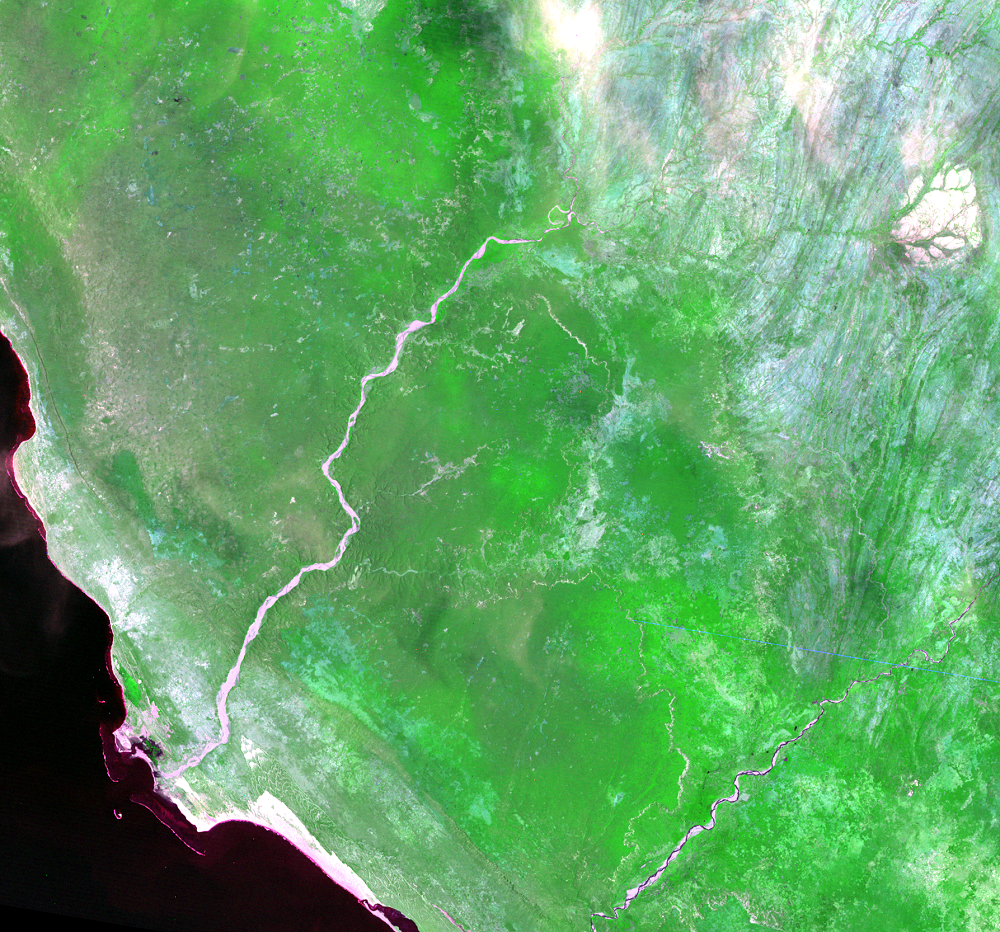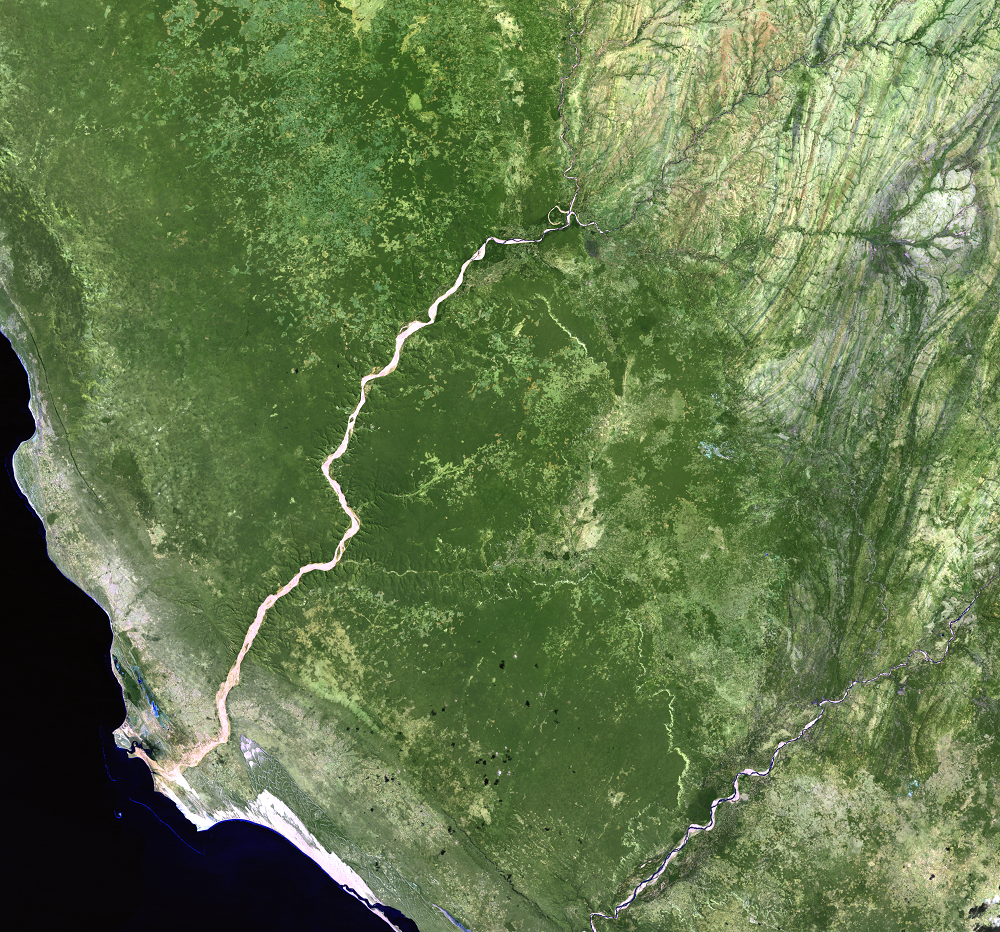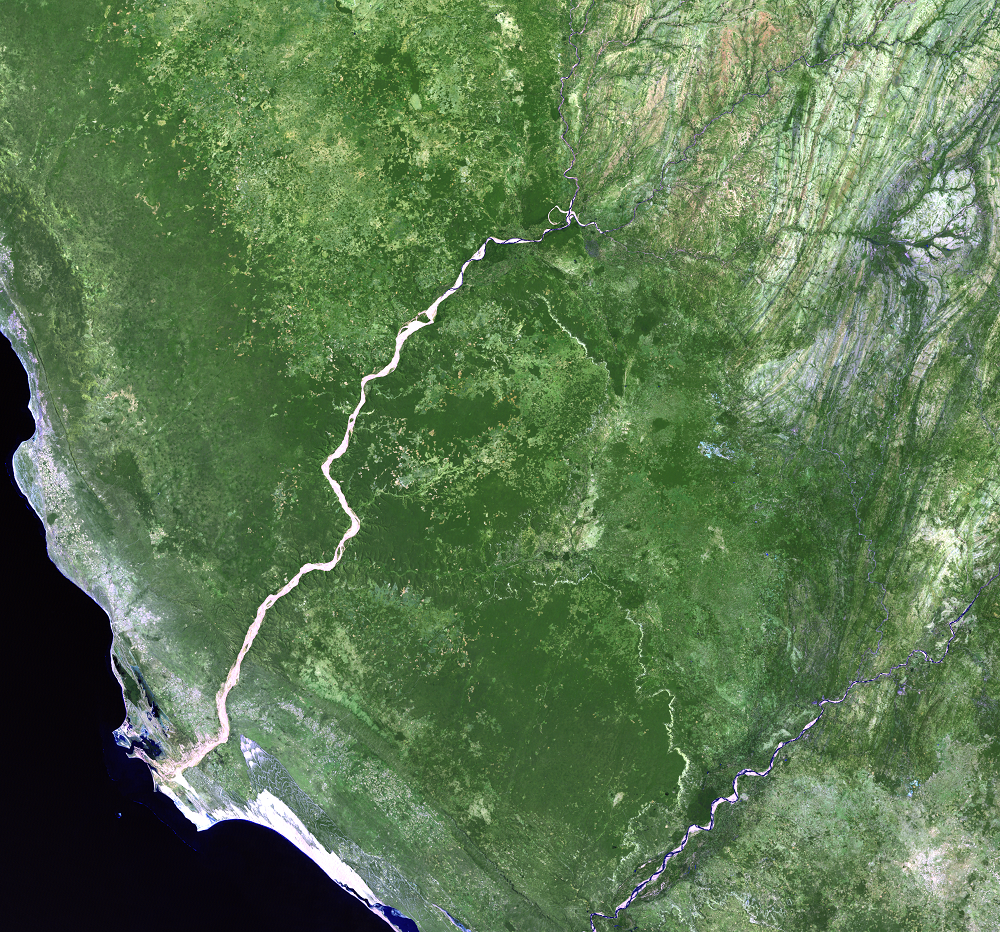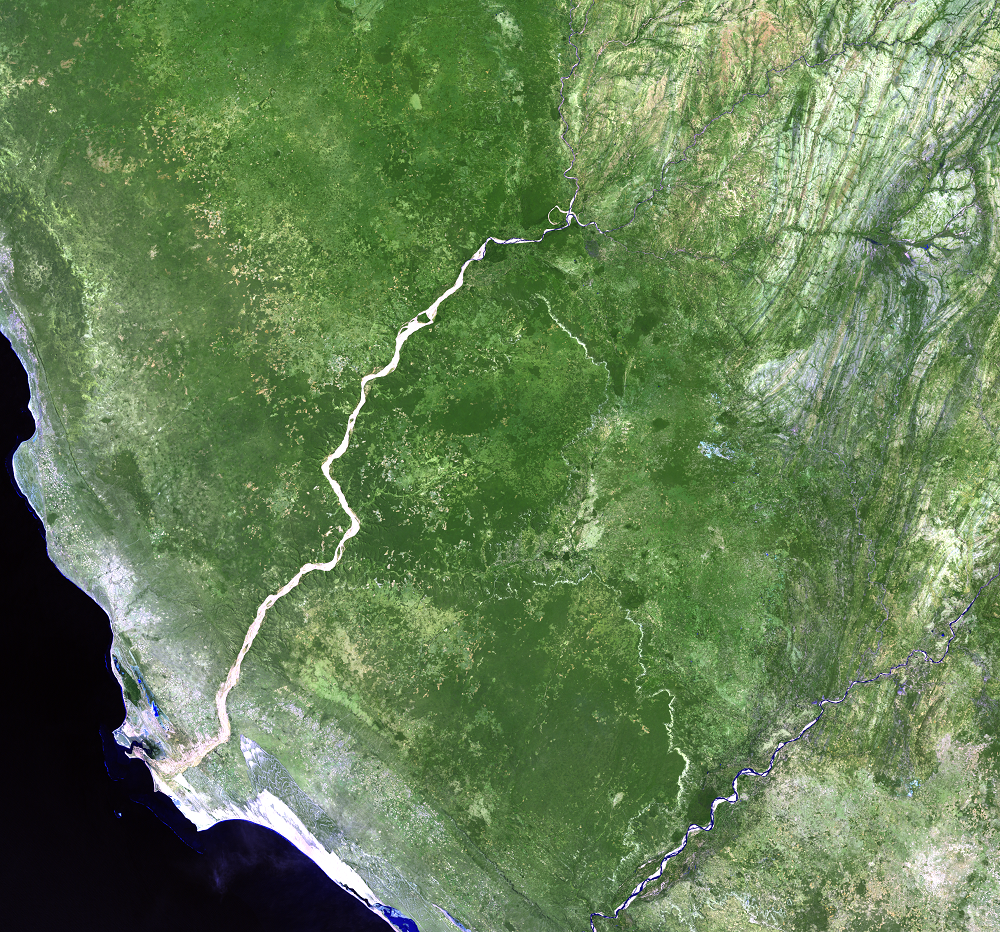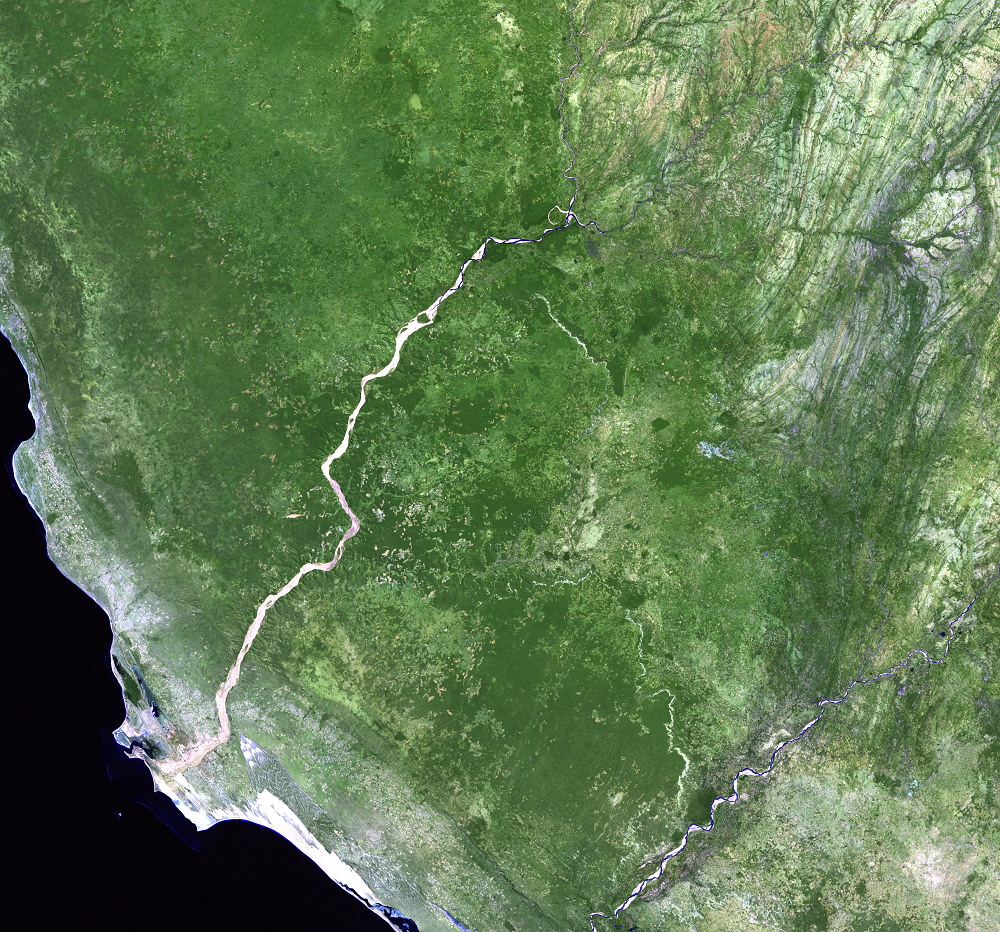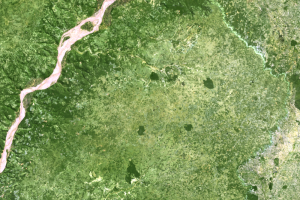
Madagascar
Earth Resources Observation and Science (EROS) Center - Earthshots
Madagascar, the world’s fourth largest island, is located off the southeastern coast of Africa in the Indian Ocean. Because it is isolated from neighboring continents, almost all of its plant and animal species are found nowhere else on Earth.
In southwestern Madagascar, plants have adapted to a dry desert-like climate. These unique plants are so peculiar they cannot be classified into common classes like desert or forest. Many species there have small leaves and spines and can retain water very well—characteristics of succulents that are typical in deserts. They also have tall trunks, appearing more like trees. So the vegetation in this region often is named Madagascar Spiny Thicket.
This ecoregion, which extends across southern and southwestern Madagascar, has a long dry season. Most of the rain falls from October to April, but rainfall amounts can be erratic. The plants’ unusual adaptations allow them to survive the long dry periods. But this ecoregion is experiencing rapid deforestation, which is evident in this Landsat series.
Imagery
Downloads
Brinkman, K., Noromiarilanto, F., Ratovonamana, R.Y., and Buerkert, A., 2014, Deforestation processes in south-western Madagascar over the past 40 years—what can we learn from settlement characteristics? Agriculture, Ecosystems, & Environment, v. 195, p. 231–243.
Butler, R., 2012, Threats to Madagascar's Biodiversity and Ecosystems: WildMadagascar.org, Web page at http://www.wildmadagascar.org/conservation/threats.html. (Accessed May 22, 2015.)
Clark, M., 2012, Deforestation in Madagascar: Consequences of Population Growth and Unsustainable Agricultural Processes: Global Majority E-Journal, v. 3, no. 1, p. 61–71, available online at http://www.bangladeshstudies.org/files/Global_Majority_e_Journal_3_1_Clark.pdf. (Accessed May 11, 2015.)
Gardner, C., and Jasper, L., 2013, Jewels among Thorns: Africa Geographic, available online at http://www.kent.ac.uk/sac/current-students/research-students/files/Gardner_publication_2013.pdf. (Accessed May 22, 2015.)
NASA, 2003, Deforestation in Madagascar: NASA Earth Observatory, available at http://earthobservatory.nasa.gov/IOTD/view.php?id=3615. (Accessed May 11, 2015.)
UNEP, 2005, Forests—Subtropical Forest, Itampolo, Madagascar, in One Planet, Many People—Atlas of Our Changing Environment: Nairobi, Kenya, United Nations Environment Programme (UNEP), p. 172–173. (Available online at http://na.unep.net/atlas/onePlanetManyPeople/book.php.)
UNEP, 2008, Africa—Atlas of Our Changing Environment: Nairobi, Kenya, United Nations Environment Programme, 374 p.
UNEP, [n.d.], Mikea Forest: Environmental Change Hotspots, Division of Early Warning and Assessment (DEWA), United Nations Environment Programme, available online at https://na.unep.net/atlas/webatlas.php?id=350. (Accessed May 22, 2015.)
WWF, [n.d.], Madagascar Forests: available online at http://assets.panda.org/downloads/madagascar_forest_cc_final_12nov07.pdf. (Accessed May 22, 2015.)
WWF, 2015, Madagascar Spiny Thicket: World Wide Fund For Nature Web page at http://wwf.panda.org/about_our_earth/ecoregions/madagascar_spiny_thicket.cfm. (Accessed May 11, 2015.)
WWF, 2014, Madagascar Spiny Thickets: The Encyclopedia of Earth Web page at http://www.eoearth.org/view/article/154345/. (Accessed May 11, 2015.)

